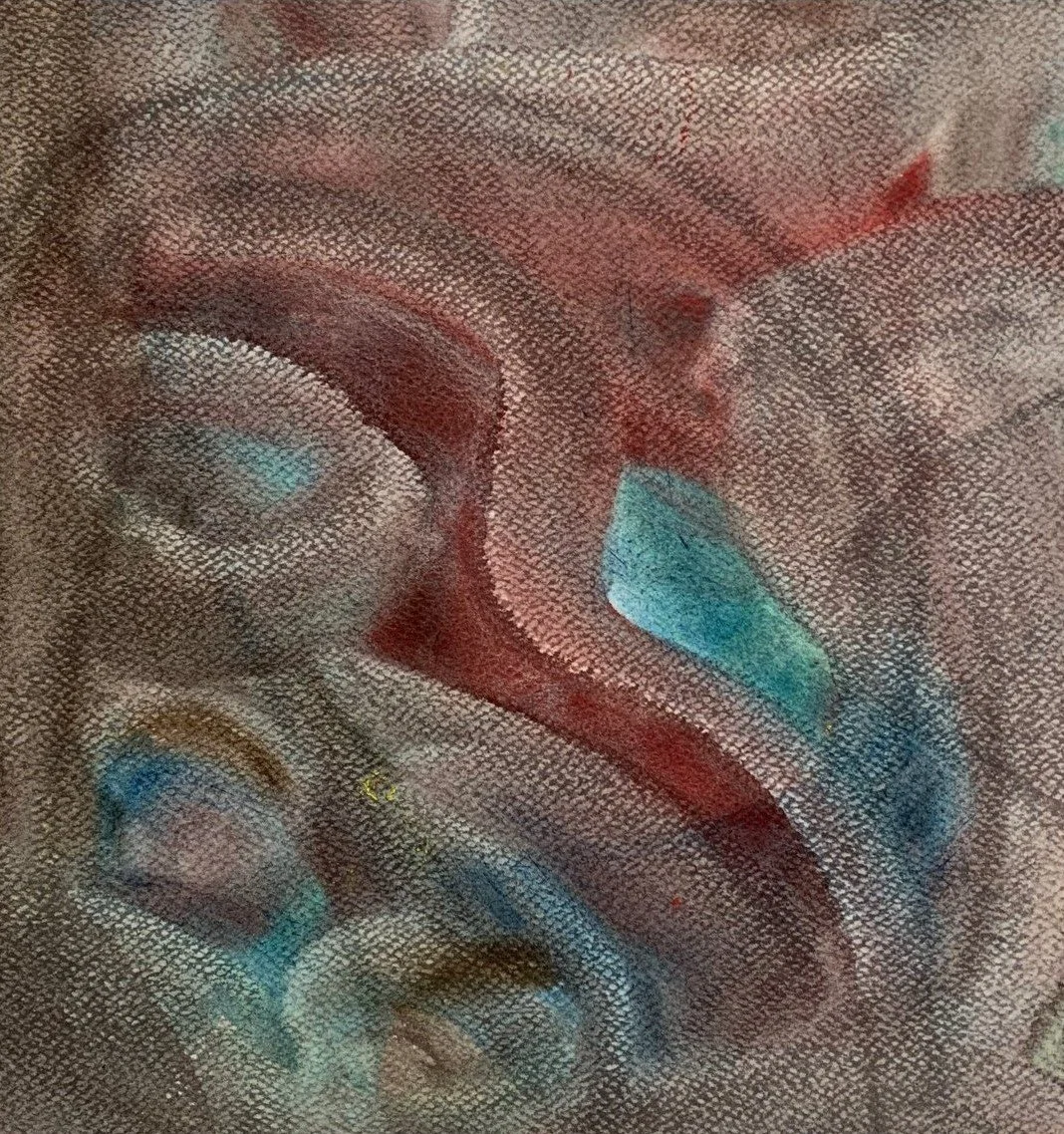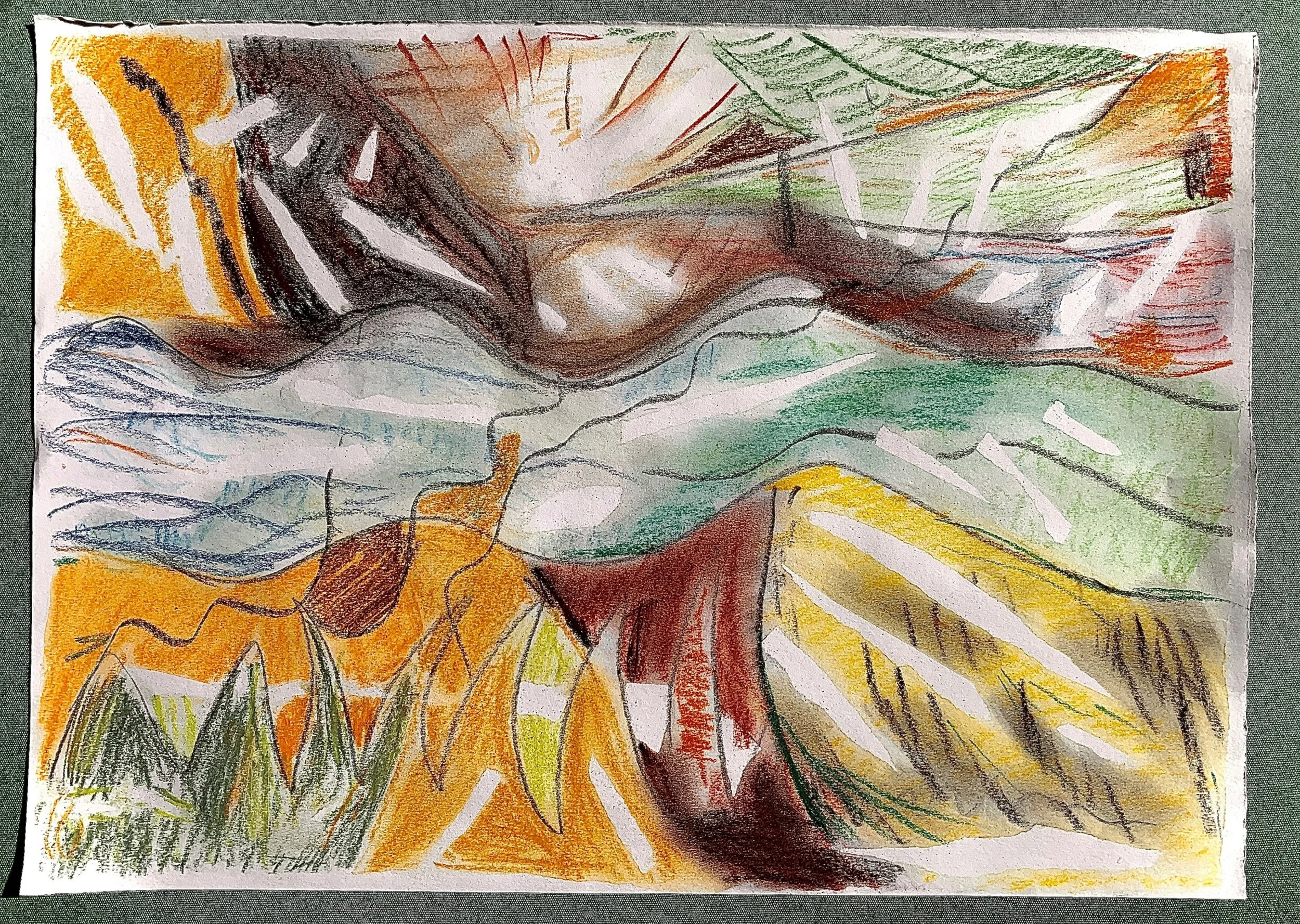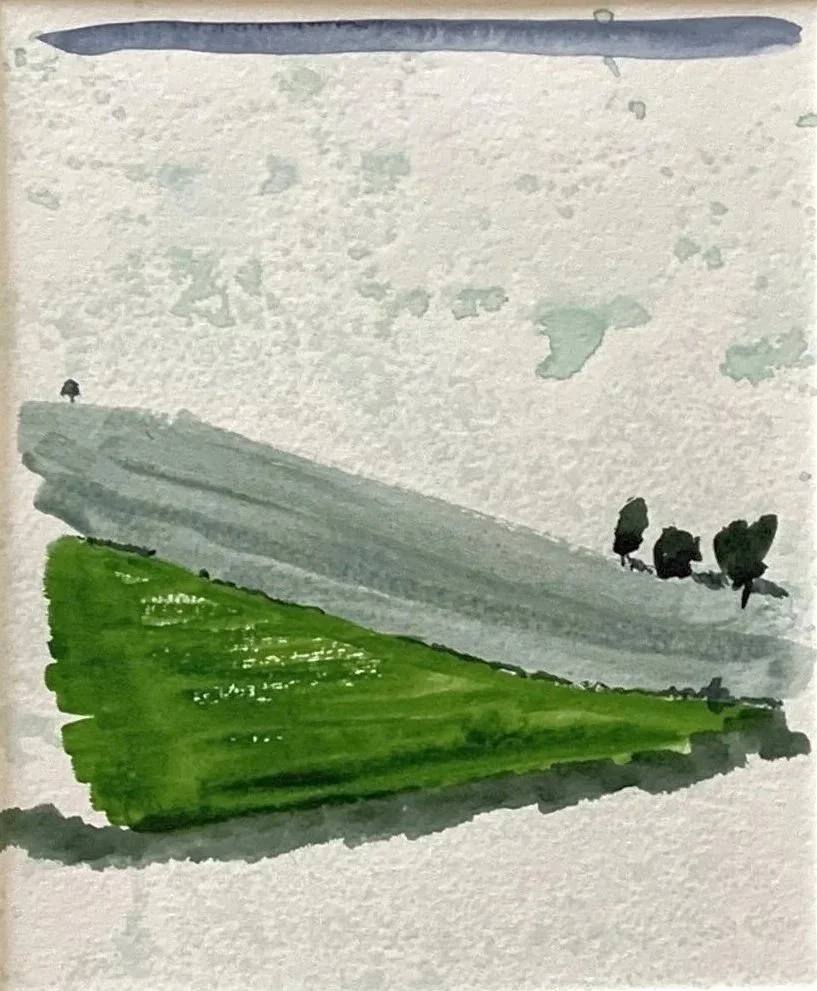Playpen
It is important to make time to experiment with materials and media, and ask myself
What happens if….?
The results can be hit and miss, but occasionally something interesting emerges. Techniques that work can be added to the repertoire for future projects. In fact the more I play, the more I realise that I should spend more time ‘playing’. This is when the art happens.
Harmony in my head
Tempura 40 x 40 cm
I used a plastic card and kitchen roll to pull a dark tempera pigment over a bright acrylic background and let the light shine through.
Water Tree
Tempera 25 x 18 cm
I painted with a hair dryer by blowing a dilute solution of tempera pigment across a wet surface.
Virgin River
Pastel and Pencil 50 x 30 cm
I attached torn strips of masking tape to my paper before drawing in pastel and pencil. Removing the strips revealed white areas and enhanced the movement and light of the drawing.
One Tree Hill
Watercolour 25 x 18 cm
I dappled a drawing board with watercolour wash, took a monoprint of the wet splodges and then painted with the watercolour wash directly onto the wet print.
Revolutionary Poster # 1
Watercolour on 140 Birch tiles, Oak frame, 60cm x 85cm
Instructions on aged pamphlet and stained storage plywood box.
Revolutionary Poster #1
My goal was to create something that, as Lee Ufan describes in his essay ‘the Art of Encounter’, would open a space that ‘eliminates everydayness and arouses fresh perceptions’
I thought how puzzles take their players out of the everyday, and how my own acts of protest have given me a different perspective on how people behave when they encounter someone who is doing something outside of a society norm.
I titled the work ‘revolutionary’ for a number of layered reasons. It is based on the 19th century educationalist Friedrich Froebel’s kindergarten ‘gifts’ which revolutionised the way children learned logic, reasoning and spatial awareness. The backdrop is the revolutionary painting ‘The Talisman’ by Paul Serusier - perhaps the first time an artist painted blocks of colour to represent an abstract landscape.
I painted 140 separate pieces of birch plywood to make the picture and the act of adding graffiti marks to my own painstaking painting felt like an act of protest. The marks are revolutionary slogans which emerge when the pieces are revolved. I’ve never seen another puzzle of this type, so perhaps, in a small way it is in itself revolutionary.
The work is installed at West Dean College of Arts and Conservation in the Oak Hall where surrealist artists played and experimented. This resonates with the surprise and unpredictability which is inherent in the puzzle.




